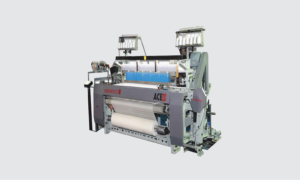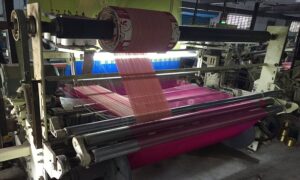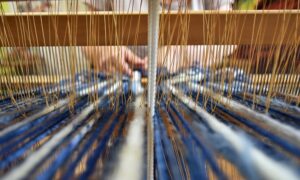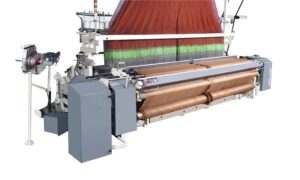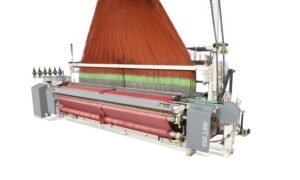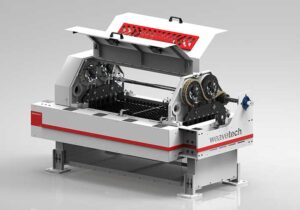Cotton Fabric A Guide on Weaving Mechanism Benefits & Uses
Cotton Fabric A Guide on Weaving Mechanism Benefits & Uses

Cotton fabric, renowned for its versatility and breathability, has been utilized for centuries in various applications such as clothing, bedding, and household items. Its widespread appeal stems from its exceptional softness, long-lasting nature, and low-maintenance requirements. Have you ever pondered over the intricacies involved in manufacturing cotton fabric and the specific weaving machinery essential for its production? Let’s delve into the process of fabricating cotton fabric, the weaving mechanisms necessary for its manufacturing, as well as explore the advantages and diverse applications of this remarkable material.
What is Cotton Fabric?
Cotton fabric, derived from the fibres of the cotton plant (Gossypium), is a popular textile renowned for its softness, breathability, and durability. Its natural properties make it highly absorbent and easy to dye, allowing for the creation of diverse textures and patterns through weaving. The versatility, affordability, and sustainability of cotton fabric have made it a staple in the textile industry. Despite its susceptibility to damage, it remains one of the most extensively utilized fabrics globally, with a history spanning thousands of years. The advent of the Industrial Revolution brought significant advancements to fabric production, thanks to groundbreaking inventions such as the cotton gin and power loom. Discover the unrivaled excellence of Weavetech, the leading manufacturer of textile machinery in Gujarat! Experience the pinnacle of innovation, precision, and reliability in textile manufacturing equipment.
How is Cotton Fabric Made: The Production Process?
Throughout the production process, stringent quality control measures are implemented to ensure that the cotton fabric meets the desired standards. Skilled technicians and quality control personnel carefully inspect the cotton fibers at various stages, from ginning to weaving and finishing. They assess factors such as fiber strength, length, and uniformity, as well as monitor the fabric for any defects or inconsistencies. Sophisticated testing equipment and techniques are employed to evaluate the fabric’s physical properties, including tensile strength, tear resistance, colorfastness, and dimensional stability. This rigorous quality control helps to maintain the integrity and reliability of the cotton fabric, ensuring that it meets customer expectations and industry standards. By adhering to meticulous quality control procedures, the production process for cotton fabric attains the highest levels of excellence, resulting in textiles that are not only visually appealing but also durable and comfortable for various applications. Experience textile manufacturing excellence with Weavetech – your trusted partner for cutting-edge machinery and unrivaled service.
Different Varieties of Weaving Machines Employed in Cotton Fabric Manufacturing:
Air Jet Looms: An air jet loom is a type of weaving machine used in the textile industry to produce woven fabrics. It is a highly efficient and versatile loom that utilizes air jets to propel the weft yarn through the warp yarns, creating the interlacing pattern that forms the fabric. The main components of an air jet loom include a warp beam, a shedding device, a weft insertion system, a beating-up mechanism, and a take-up roller. The warp beam holds the parallel warp yarns, which are the vertical threads of the fabric. The shedding device raises and lowers the warp yarns to create an open shed through which the weft yarn can be inserted.
Rapier Looms: Rapier looms are highly efficient and rapid weaving machines that employ a flexible metal apparatus to grasp the weft yarn from one side and transport it across to the opposite side. They are well-suited for the production of various cotton fabrics, such as terry cloth and corduroy, offering versatility in their weaving capabilities. Are you looking to revolutionize the textile industry? Join Weavetech today and experience the future of weaving technology! Discover our cutting-edge looms, designed for optimal efficiency and exceptional fabric quality.
Shuttle Looms: Shuttle looms are traditional weaving machines that have been used for centuries to produce fabrics. They are known for their distinctive shuttle, a wooden or metal device that carries the weft yarn across the warp yarns to create the interlaced pattern of the fabric. The shuttle moves back and forth within the loom, passing through the shed created by the shedding device. One of the notable characteristics of shuttle looms is their ability to produce tightly woven and sturdy fabrics. The shuttle’s motion creates a tight beat-up, firmly securing the weft yarn in place. This makes shuttle looms particularly suitable for producing heavy and durable fabrics like denim and upholstery materials.

